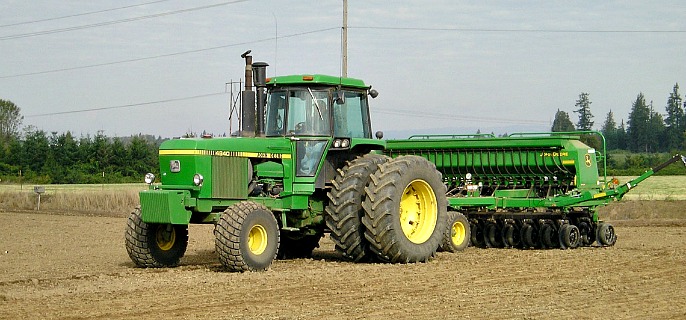
PHOTO COURTESY OF ODA
Heads up, Oregon farmers and ranchers. What happens as part of your operation this year will provide the data for the next Census of Agriculture. The nation’s most ambitious and important agricultural survey of all will be going out to farm operators in December 2017. Between now and then, a lot of effort will go into identifying everyone who should receive that survey.
“Right now, we are building our lists,” says Dave Losh, Oregon’s state statistician with the US Department of Agriculture’s National Agricultural Statistics Service (USDA-NASS). “We know that list is incomplete because people are coming into agriculture and leaving it all the time. That’s why we are currently doing what we can to make our list the most complete it can be prior to mailing out the census survey at the end of the year.”
Nationwide, nearly one million previously unidentified farm operators have received what can be described as a survey before the survey. The National Agricultural Classification Survey was mailed out last month and recipients are asked to respond online by February 1, 2017. Quite simply, it’s a concentrated effort to identify all active farms and ranches throughout the US, including Oregon. Having a comprehensive list of farm operators allows for the best possible coverage for the 2017 Census of Agriculture.
The higher the number of names on the list, the more solid the statistics that are produced from the Census of Agriculture.
Many people who don’t consider themselves to be farmers or ranchers actually meet the official census definition of a farm, which is an operation that sells or has the potential to sell $1,000 or more of agricultural products in a year. A majority of farms in Oregon and the US normally record sales of $50,000 or less. As a result, many of the new names added to the list to receive the Census of Agriculture survey are relatively small producers who may not realize their information is needed and counted.
Losh has been busy conducting outreach activities around the state. His efforts are designed to make producers aware of the coming census and to gather new names of those who should receive the census survey in December. He works closely with producer groups, commodity commissions, and others who may have lists of their own.
“Oregon agriculture is very diverse compared to the rest of the nation,” says Losh. “If we have noticed significant growth, for example, in the hazelnut industry, we may go to the Oregon Hazelnut Commission and ask for a list of growers to make sure we are getting everyone counted. Those names are then cross-referenced in an electronic database that checks for duplication of names, addresses, phone numbers, etc.”
Since the Census of Agriculture will capture information from the 2017 production year, farmers and ranchers should keep a good accounting of what takes place this year. Timely, complete, and accurate responses to the questions in the agricultural report forms returned next year will be essential.
“The accuracy of the estimates we make, which are down to the county level both in Oregon and across the United States, really depends on accurate information from the producers,” says Losh.
The Census of Agriculture is conducted every five years, and even though the upcoming one is considered the 2017 Census, the actual results and reports won’t be completed until early 2019. That’s because of the huge amount of information and details that need to be gathered and analyzed.
“It’s really important to be counted in the census because there are a lot of situations, down to the county level, where decisions are made about agricultural land and services for farmers,” says Losh. “If there are farm operations out there not known or counted, wrong assumptions or decisions could be made.”
Figures compiled by the census are used to determine funding for extension work, research, soil conservation, and other agricultural-related services. Private industry uses census statistics to provide more effective production and distribution systems– for example, to locate feed mills and farm equipment dealerships where they will provide better service and offer competitive prices to farmers. Information from such statistical data helps make the case for specific grant program dollars.








